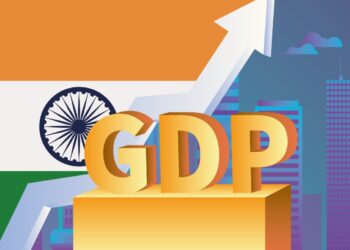Investors are increasingly betting on a significant interest rate cut by the US Federal Reserve, marking the first reduction in borrowing costs in over four years. This anticipated move comes amid growing economic uncertainties and market volatility. The potential half-point rate cut is seen as a response to various economic pressures, including inflation concerns and global financial instability. As the Fed’s decision looms, market participants are closely monitoring the implications for both domestic and international financial landscapes.
Economic Pressures and Market Reactions
The anticipation of a major rate cut by the Federal Reserve has sparked significant reactions across financial markets. Investors are adjusting their portfolios in preparation for the potential shift in monetary policy. The expected rate cut is largely driven by persistent inflationary pressures that have been affecting consumer prices and business costs. Additionally, global economic uncertainties, such as trade tensions and geopolitical risks, are contributing to the Fed’s considerations.

Market analysts suggest that a half-point rate cut could provide much-needed relief to the economy by lowering borrowing costs for businesses and consumers. This move is expected to stimulate economic activity by making credit more accessible. However, some experts caution that the rate cut might not be sufficient to address deeper structural issues within the economy.
Implications for Global Financial Markets
The potential rate cut by the US Federal Reserve is not only significant for the domestic economy but also has far-reaching implications for global financial markets. International investors are closely watching the Fed’s actions, as changes in US interest rates can influence capital flows and exchange rates worldwide. A lower interest rate environment in the US could lead to a depreciation of the dollar, impacting trade balances and investment decisions globally.
Emerging markets, in particular, may experience increased volatility as a result of the Fed’s decision. Countries with high levels of dollar-denominated debt could face challenges in managing their financial obligations. On the other hand, a weaker dollar might benefit exporters by making their goods more competitive in international markets.
Long-term Economic Outlook
While the immediate focus is on the upcoming rate cut, the long-term economic outlook remains uncertain. Economists are divided on whether the rate cut will be a one-time adjustment or the beginning of a more prolonged easing cycle. Some argue that the Fed may need to implement additional rate cuts in the future to sustain economic growth and prevent a potential recession.
The effectiveness of the rate cut in achieving its intended goals will depend on various factors, including consumer confidence, business investment, and global economic conditions. Policymakers will need to carefully monitor these indicators to determine the appropriate course of action. As the economic landscape continues to evolve, the Fed’s decisions will play a crucial role in shaping the future trajectory of the US and global economies.









